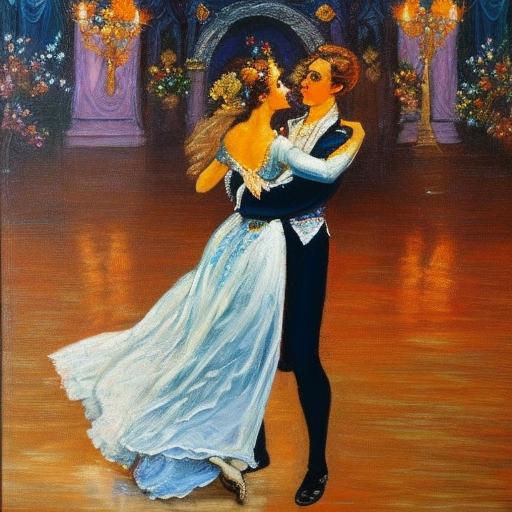Summary: The waltz is a popular ballroom dance that originated in the late 18th century in Austria and Germany. It is characterized by its distinctive 3/4 time signature and smooth, flowing movements. The waltz has evolved over the years and has become a staple in ballroom dance competitions and social events worldwide.
Origins and Evolution
The waltz originated in the late 18th century in the suburbs of Vienna, Austria. It was initially considered scandalous due to its close hold and rotational movements, which were seen as provocative at the time. However, the dance quickly gained popularity and spread throughout Europe.
In the early 19th century, the waltz underwent significant changes. The Viennese Waltz, characterized by its fast tempo and elegant turns, became the standard style of the dance. It was embraced by high society and became a symbol of refinement and sophistication.
Characteristics and Technique
The waltz is danced in 3/4 time, with three beats per measure. The basic step consists of a box-like pattern, where the dancers move forward, to the side, and then close their feet together. The movements are smooth and flowing, with an emphasis on grace and poise.
The technique of the waltz requires dancers to maintain a strong frame and connection with their partner. The lead partner initiates the movements, while the follow partner responds and follows the lead’s cues. The dancers must maintain a close hold and move in sync with each other, creating a seamless and harmonious dance.
Styles and Variations
Over the years, various styles and variations of the waltz have emerged. In addition to the Viennese Waltz, there are also the International Standard Waltz and the American Smooth Waltz.
The International Standard Waltz is the most common style seen in ballroom dance competitions. It is characterized by its elegant and flowing movements, with dancers often incorporating spins and turns into their routines.
The American Smooth Waltz, on the other hand, allows for more freedom and creativity. Dancers have the option to break away from the traditional closed hold and incorporate different patterns and movements into their routines.
Popularity and Influence
The waltz’s popularity has endured over the years, and it remains a staple in ballroom dance competitions and social events worldwide. Its timeless elegance and romantic nature have made it a favorite among dancers and audiences alike.
The waltz has also had a significant influence on other dance styles. It served as a foundation for the development of other ballroom dances, such as the foxtrot and the tango. Additionally, its influence can be seen in various forms of popular dance, including contemporary and ballet.
Conclusion
The waltz is a classic ballroom dance that has captivated audiences for centuries. Its origins in Austria and Germany, along with its smooth and flowing movements, have made it a symbol of elegance and romance. Whether danced in its traditional form or in various styles and variations, the waltz continues to be a beloved dance form that transcends time and culture.












